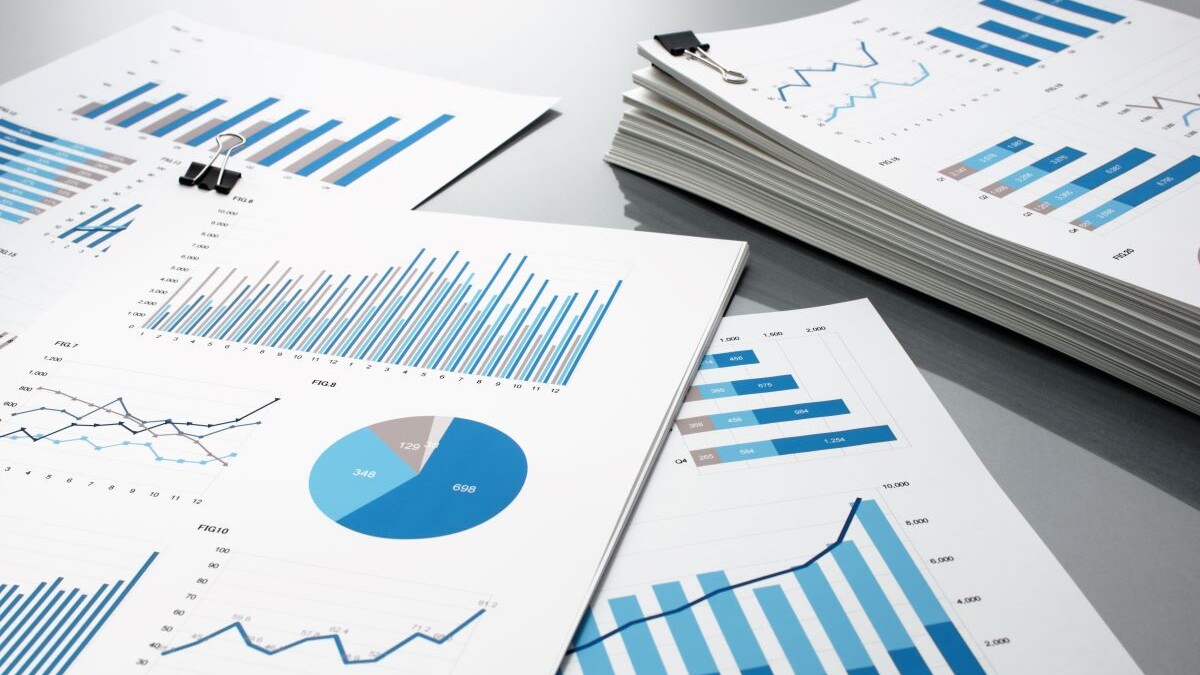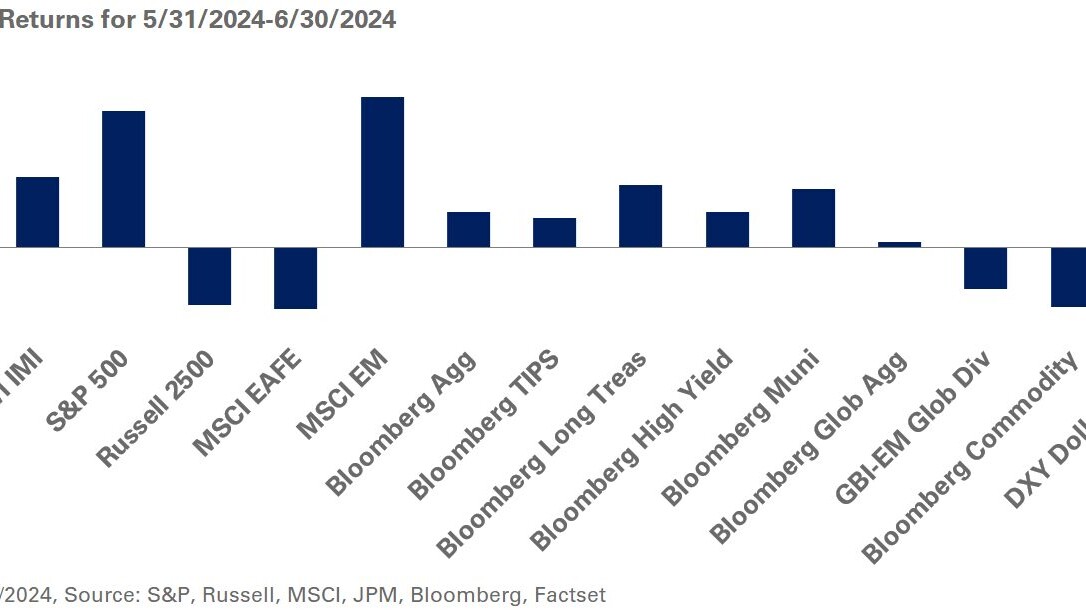Asset allocation is integral to the success of any investment portfolio, and it is among the most important decisions an investor will make. In this discussion, we pull back the curtain to offer you a behind-the-scenes glimpse of the issues and themes at the forefront of the meetings of the NEPC Asset Allocation Team.
THE PARTICIPANTS:
Jennifer Appel, CFA, Senior Investment Director
Robert Goldthorpe, ASA, Investment Director
Phillip Nelson, CFA, Partner, Director of Asset Allocation
James Reichert, CFA, Partner, Senior Director of Portfolio Strategy
Jack Yuan, CFA, Investment Director
Aparajita Bubna, Managing Editor, facilitated this roundtable
What are your thoughts on the current economy and the likelihood of a recession in the next 12 months?
James: I think in the next 12 months there is certainly a possibility of a recession as there are some potential headwinds that U.S. consumers might face. But I think my base case assumption would be we don’t see a recession in the next 12 months and U.S. consumption continues to drive positive growth here in the States.
I think it might be a different story for other developed economies where they might not have as much of a consumption base to help drive their economies. So, while I think the U.S. skirts recession in the next 12 months, it might not be the same internationally.
Jennifer: I will add to that. I think the U.S. will likely avoid an official recession. I do think that some of the ideas around rolling recessions are interesting and may apply to the scenarios that we’re seeing today. We’ve talked about manufacturing being in a recession, then we had all those data points on concerts, travel and movies that have supported the economy and spending.
We might just see these pockets that have downturns.
Phillip: For a recession to occur, we need something in the order of 2.5 million job losses over the next 12 months. That coincides with big reductions in consumer spending and credit defaults, many of which are the cause of job losses.
And when you look at the current markets and the economy’s ability to withstand interest rates at the current levels, it’s hard to see that level of job loss over the next 12 months.
Jack: A lot of what has been said is focused largely on consumers and they’ve been strong. I’m also looking at U.S. business investment trends. Business investment rebounded in the most recent quarter but once that gets pulled back if, say, rates stay high for longer, I think that would be the first sign of a crack.
Robert: It’s hard to see a recession happening because you need some of those things to occur…like the 2.5 million job losses. But a recession-triggering event can happen suddenly and when you get that catalyst—it can be domestic, a geopolitical factor or may be something related to China—that’s kind of the last straw that breaks the camel’s back and that’s the risk I see. However, the timing is impossible to predict. May be in the next 12 months a recession will happen.
Phillip: What do you think will be the most likely cause of a recession?
Jack: I’m kind of shocked at how well the U.S. economy is faring. Consumers have been able to accept and adjust to this new rate environment. It seems like interest rates are going to be higher for longer and it’s very unusual to me that people are this well adapted, but I do see a risk of a potential credit issue for businesses and consumers that’s likely to begin with smaller businesses before it flows up to larger businesses.
Robert: To Jack’s point, everyone’s surprised at the ability of consumers and businesses to weather the rates storm. Many corporates already refinanced before rates rose, so the Federal Reserve’s comments on the potential for a long and variable lag resonates with me.
James: Rob is right…the corporate expense problem probably isn’t really a problem for at least the next 12 months. The most likely driver of a recession would be a complete surprise, something entirely unexpected. I don’t see the Fed providing much of a surprise. So, the bigger surprise might come from an externality such as supply shocks in oil.
Jennifer: I know there’s a lot of data showing that the consumer has been resilient, but we talked about some of the pressures that are coming down the pipeline—like student loan payments or the savings levels coming down, credit card balances moving up—and if we don’t have more upward pressure on the wage side, then that could squeeze pockets along with oil prices where you start to see a real slowdown in spending. Then, that flows through to GDP…that’s what I’m worried about.
Phillip: If we see a big uptick in the price of oil or gas, that’s a headwind for consumers. Then, add to that, price increases across the board. So, if we see a resurgence in inflation in the U.S., then the Fed has to push the Fed Funds rate closer to 7%; I think that’s the type of tipping point that would shock people.
Robert: That brings me back to my point about the impossibility of predicting when recessions happen because the catalyst is a surprise that no one sees coming.
Jennifer: What if one of the things that we don’t see coming or that the market doesn’t see coming is just that rates actually stay high? Everyone keeps saying, “Rates are moving lower, we can push off issuing debt,” but if there’s a certain point where we can’t anymore and then you have to realize that hit to markets.
James: I think if interest rates are that high for a really long amount of time, it’s probably because the U.S. economy is doing fine. So, companies at that point should hopefully be able to adjust, but margins will compress as companies adapt to higher labor costs.
What are your views on inflation? When will we see inflation move down to the Feds 2% target level?
James: That will never happen. Next question!
But seriously, 2% does not seem like an achievable place to land in the next two-to-three years because I do think we are seeing a resurgence of the power of labor in the U.S. economy. I think there’s going to be an ebb and flow of wages going up, margins compressing and the economy adjusting.
Getting inflation to 2% feels like an impossible task once you get to a world where wages have normalized at a higher level.
Jennifer: If you think that labor is the source of inflationary pressures, when does that go away because of some of the demographic pressures that we have?
Robert: I think you have to believe in the conviction of the Fed…that it can get inflation down to 2%.
You have to believe the Fed wants to land the plane.
James: People will ask the question…unemployment is at 3.5% and real wages are growing. There are actual gains there. So, why should the Fed beat inflation down to 2%?
Robert: So, now you’re getting into the question of why 2%? Why is that the target? It’s a hard question to answer. In terms of timing, for the Fed to get to 2%, will it be two or three years? I don’t think the Fed has communicated that.
Phillip: I don’t think the Fed knows it either. I think the inflation risk is entirely to the upside in a fairly significant way. Inflation and economic growth are somewhat self-reinforcing if you don’t have a recession that brings the average price level down closer to the 2% target.
I think the Fed’s not willing to say it, but its inflation target is well above 2% and it’s willing to tolerate something maybe close to 3% or 3.5% in the hopes that inflation moderates in the future. But this is a strategy of hope.
Robert: You can get to the 2%, but is it worth it? Where we’re at today seems rather good for the economy in terms of unemployment and real wage growth.
James: I think it’s important to remember that the Fed has the dual mandate of inflation and full employment which is unique; other central banks only care about fighting inflation. So, while the European Central Bank doesn’t necessarily have a mandate to keep employment high, all it’s trying to do is fight inflation and is keeping rates high. This could possibly lead to a recession, whereas here the Fed has to maintain a balance because it has both jobs to fulfill.
Phillip: You look at the Fed’s approach, it’s really anchored to not making a policy error, so it doesn’t want to overshoot on rates. It’s trying to land that plane, as Rob said, and it runs the risk that inflation can take hold…not to compare this to the 1970s.
James: One of the issues in the 1970s was a stop-and-start monetary policy that allowed inflation to become more ingrained into the economy and the Fed had to raise interest rates much higher than it otherwise would to squeeze inflation out of the economy, causing a deep recession.
But it helps the unfunded liability problem in this country. So, whether or not people think inflation’s a bad thing in the long run, it’s almost irrelevant because consumption fuels everything. What does it matter what our inflation is as long as consumers are spending and able to spend more?
Robert: So, you’re saying inflation doesn’t matter…up to a certain degree.
Jennifer: But doesn’t inflation matter? If half of the Fed’s mandate is price stability, then we have to assume under that scenario that everybody’s got a job and the job market is quite strong.
James: Full employment? Then interest rates stay where they are or move higher. That’s where the 3% inflation target becomes more real and in the longer run, I think inflation just needs to be higher.
Phillip: There’s the more central question you’re actually asking – does the Fed lose the power of its mandate—whether it’s by choice or politics—if it’s not focused on managing inflation?
And the governor of inflation actually really comes down to social stability. If people are comfortable with higher levels of inflation, then there’s willingness to tolerate it.
Jack: Well, what if real GDP was 1.8%, unemployment 4% and inflation 3%? The difference relative to a 2% inflation level, all else being equal, nominal GDP would be 1% higher, and borrowing costs would also be higher.
Phillip: You’re arguing that essentially interest rates need to stay higher and permanently higher because of moderately elevated inflation target, right?
Jack: If the Fed changes its target, then yes.
James: So, that would also entail lower price-to-earnings ratios and higher earnings yields for equity markets.
Phillip: What are everyone’s headline CPI numbers for 2024? For me, it’s 4.5%.
Jack: 3%.
Robert: 3.25%.
James: 4%.
Phillip: All these numbers are above the Fed’s target, which implies that markets are not discounting the potential for more rate hikes to come in a moderately higher-inflation environment.
Jennifer: That also suggests that our dot plot is higher than the Fed’s and the markets’.
Robert: What’s the right path down to 2%? Is that within one year or two years? I think the Fed will take its time.
What do you think the next move will be for the Fed? A rate hike or rate cut?
Jennifer: A hike, with the inflation views we just articulated. We could see pause, hike, pause. The risk we keep circling back to is not how high rates get when we get that next hike, but how long we’re sitting there.
James: I’ll say hike too. There’s more to come.
Robert: Hike. I think there’s more quantitative tightening ahead, in addition to Treasuries rolling off the balance sheet.
Phillip: The balance sheet tightening is really important, and the impact of the Fed’s balance sheet moving off its peak of nearly $9 trillion is being overlooked. It’s slowly coming down and, in my mind, the Fed is hoping that as maturities roll off the balance sheet, the back end of the Treasury curve will start to steepen.
That’ll push the 10- and 30-year higher and then, to some degree, the Fed won’t have to raise the Fed Funds rate as much if inflation is slightly elevated.
Moving on, what’s NEPC’s stance on China?
Robert: I think the market correction and sentiment we’ve seen in the last 12 months are warranted; valuations are where they should be; the market has come down to earth in terms of expectations in China. I think our risk-return assumptions for China are realistic, given where prices are at today. Prices are fairly priced in China right now and there are some value opportunities.
Jennifer: We came into the year with many people thinking that the economic reopening was going to be somewhat similar to what we have seen in other markets, where spending picked up post-COVID with people traveling, eating out and buying goods. With China, this hasn’t happened to the extent of what the expectations were, which is why I think you have seen sentiment moving lower.
I still believe in the long-term story around China. I think a lot of the regulatory pain that has been experienced and that rocked the markets will be less of an influence going forward. There are still good companies and investment opportunities, especially with an attractive valuation starting point today.
Phillip: In relation to capital markets, China is around 3% of the market cap of global equities. So, in many cases, it’s a minor component of people’s equities portfolios. For example, Japan’s weighting is 2X compared to China. That said, China’s economic impact is far greater because it represents an outsized level of GDP growth for the globe.
To me, the outlook for China is really about the politics of U.S. and China. Both sides have pivoted to a more confrontational approach, and they’re also appealing to their political bases. You look at the policies the U.S. has put in place around trade, restrictions on technology, and their impact on general business sentiment. Clearly, these have had a more negative impact on China.
One of the things we constantly think about is what could surprise markets…a big surprise to markets would be a more economically favorable geopolitical stance from China, which would potentially really drive prices higher.
What would force us to consider not investing in China?
Jennifer: From a regulation standpoint, a concern for investors is if China turns away from the market-friendly pro-business reforms that have happened over the last decade. Monitoring the currency will give us signs of what the Chinese are thinking and what it will do next. I still think China is doing a lot of the right things related to consumer and business confidence. I’d be concerned when it stops this kind of support.
Phillip: Do you want to stay invested in China?
James: Yes.
Robert: No.
Jack: Yes. There’s a greater upside than downside.
Jennifer: Yes, and I would not want to sell at the bottom.
Phillip: Yes, but if we see a significant rally in Chinese equities, I would consider reducing my exposure to China.
Robert: I second that, but I’m not sure it’s about long-term fundamentals; it’s all about the politics and the opportunity.
Back to my point about China being properly priced today after the correction. There was this outsized exuberance and hopefulness that it would evolve into a developed market and meet all these expectations. It didn’t live up to its expectations and some investors just gave up. Is that an opportunity?
What do you think about private markets?
James: Private markets offer opportunities for investors who can handle the illiquidity, whether it’s equity, debt or real estate. But I think the number of investors who need private markets to achieve return targets is probably lower today given the returns on regular high-yield debt. Look at public fixed income relative to private fixed income…that’s offering opportunities that we haven’t seen in a long time. Even on the equity side, there are small-cap companies that have gotten beaten up with all the recession fears that might offer better opportunities today.
Phillip: From an asset allocation perspective, do higher interest rates mean less private market exposure is necessary? Sure, I’d make that argument, but I do still think there’s good opportunity for private market managers too. Whether it’s creating, growing or fixing companies…there are still people who are good at that. The good managers will make money.
Robert: There’s a large amount of dry powder waiting to be deployed, but private markets will have to come to grips with the higher levels of interest rates. History shows the more specialized ability for private investments to manage periods of distress and/or provide some operational expertise. A more challenging environment should be better for private markets over the long term and investors would benefit from the illiquidity premium.
How are your current macroeconomic views impacting your asset allocation recommendations?
Robert: I think the stocks versus bonds balance and higher rates have changed the story. It’s skewed more towards fixed income now because of interest rates. But what’s the right balance and where are you going to get that fixed-income exposure?
Jennifer: I think that’s the most important message. The playbook that worked for everyone in the last decade is not the one that’s going to work this decade, and you have to think about what that means from a strategic asset allocation perspective.
So, we have an opportunity in high yield, but I think we would be more comfortable with people taking a closer look at fixed income overall.
Jack: Depending on the type of investor you are, if you’re seeking a goal of a specific return target or looking to improve risk-adjusted returns, credit is definitely more favorable now as you can reach your targets with lower risk levels.
Phillip: Just to reiterate everyone else’s comments, if you’re a more risk-balanced investor and have an explicit return target that you’re looking to achieve, the higher levels of interest rates and the shifts we’ve seen in the last two years give you more asset allocation options to hit your goals in the long term.
That said, if you’re an investor who is entirely focused on building long-term wealth and you have minimal cash outflows, an equity-dominant public and private portfolio still makes sense and will likely do well in the future.
James: I’ll add to that…if you look at our capital market assumptions for the last quarter, our model begs the question of why pay higher management fees when you can get corporate bond exposure for a lot cheaper? We’re looking at resizing the diversifiers and making sure that it’s useful.
I think another area that is important to explore is potentially higher inflation and unexpectedly higher inflation…could real assets and liquid real assets have a role in more investors’ portfolios than previously?
Phillip: Finally, someone said it! I think real assets are significantly underrepresented in investors’ long-term strategic allocations. Real assets provide little benefit in a strong deflationary period, but in a world with elevated inflation, they provide both a total-return benefit and economic diversification as we see more volatile macroeconomic paths.
Robert: Especially when you know the stocks-bonds correlation is positive and both are performing poorly together. This is kind of concerning for investors because there’s nowhere to hide between those two courses. So, it’s real assets then.
Phillip: Would you include commodities in a strategic asset allocation?
James: I would advocate for a more diversified approach to liquid real assets that includes commodities but doesn’t quite have that volatility.
Jennifer: I agree with the diversified approach and the one thing I like about commodities is that if we are concerned about a stickier inflation environment, commodities are a big component of the economy and the CPI basket. So, there is a high correlation between those. Also, it’s not just energy that you’re getting from the commodity complex, which is often times what people think you’re getting. There’s industrial metals and agriculture, among others. So, there’s different inflation sensitivity built in there too.
Robert: As a long-term investor, do you want to be a short-term speculator or hedger in commodities? I don’t. I don’t see that fitting into the goals of a long-term investor.
Jenn, you mentioned a diversified real assets approach. What would that look like?
Jennifer: That is not a leading question at all! I think we mentioned commodities and I articulated some of the reasons why that makes sense. But there’s a few other areas, including infrastructure, natural resources and REITs, that are interesting.
Taking all of those together, it produces a better Sharpe ratio portfolio than just those asset classes individually, and you get exposure to spot markets and different parts of the supply chain as well. You get a more balanced and diversified approach to inflation and growth sensitivity.
What’s your outlook for the U.S. dollar?
James: The dollar is both a risk-on and a risk-off asset. When bad things happen, people buy dollars because of safety and, when good things happen, people have to buy more dollars because commodities are traded in dollars. So, no matter what, you’ve got to buy the dollar until there’s an alternative.
Phillip: Every developed nation is dealing with high debt loads, and higher interest rates are making deficits bigger as they pay interest expense. Typically, high debt levels flow through to currency weakness but if all currencies are weakening, you still have a bias to be in the dollar as a reserve currency.
Jennifer: I don’t see a path to a lower U.S. dollar. Whether it appreciates further or not, I don’t see a path lower.
What’s your most important recommendation to investors?
James: Diversification matters…again.
Phillip: Hitting core principles, and make sure you have enough liquidity in the portfolio. Have the appropriate level of diversification relative to your objectives. In this market environment, find areas that give you a real return and provide a carry.
What’s your best-performing asset class for 2024?
Jennifer: I’m sure I said China the last few years and I am tripling down because of where valuations are.
Phillip: I don’t know if this would be the highest returning, but I want to own more TIPS.
Jack: Single-B corporate debt.
Robert: Bank loans.
James: U.S. small-cap stocks.



